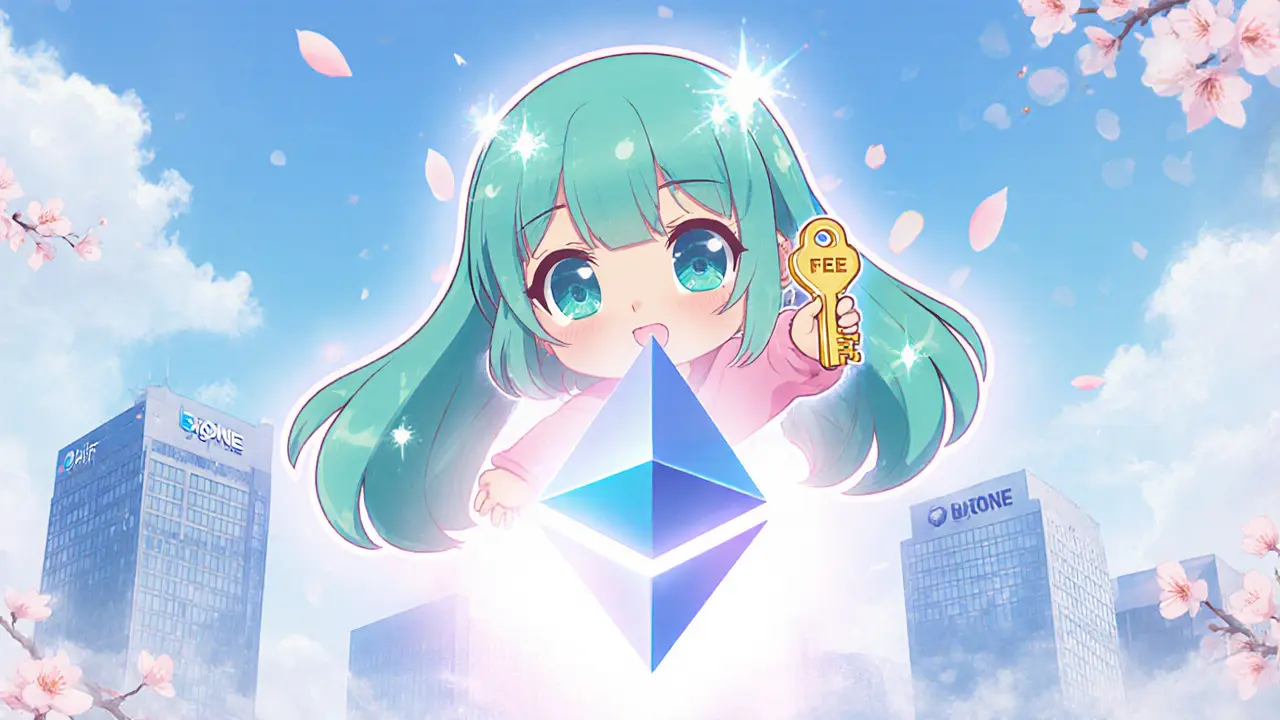BigONE Token (ONE) Explained: What It Is, How It Works & Risks

ONE Token Fee Calculator
ONE Token Fee Calculator
Important Note: ONE token's utility is limited by low liquidity and minimal trading volume. Actual fee discounts may vary due to market conditions and BigONE's implementation. Check current trading volume at CoinMarketCap.
If you’ve ever skimmed a crypto exchange’s fee schedule and saw a line about a "ONE" discount, you’re probably wondering what the BigONE Token actually is. In plain terms, ONE is the native utility token of BigONE Exchange - a Seychelles‑registered platform that launched in 2017. This article unpacks the token’s purpose, technical make‑up, market performance, and why many users view it as a high‑risk, low‑reward asset.
What is BigONE Token (ONE)?
BigONE Token (ONE) is an ERC‑20 utility token on the Ethereum blockchain that powers the ecosystem of BigONE Exchange. Holders can use ONE to slash trading fees, gain early access to new listings, and vote on certain platform decisions. The token launched alongside the exchange’s public debut, but official records don’t give a precise launch date.
BigONE Exchange - The Ecosystem Behind ONE
BigONE Exchange is a global cryptocurrency trading platform that supports more than 140 spot markets, PoS mining pools, and instant USDT loans. Despite its broad catalog, the exchange processes roughly $1.2 million in daily volume - a fraction of the billions handled by Binance or Coinbase. This modest activity directly limits demand for ONE.
Technical Specifications
- Blockchain: Ethereum (ERC‑20)
- Contract address:
0x8ec47252c404d99e0c18c018a37f201c7b0a84c4(viewable on Etherscan) - Circulating supply: ~8.58 billion ONE
- Maximum supply: Not publicly disclosed
- Wallet compatibility: Any Ethereum‑compatible wallet (MetaMask, Ledger Nano S, Trust Wallet)
- Gas fees: Paid in ETH, subject to network congestion
No third‑party audit from firms like CertiK or OpenZeppelin has been published, so the token’s code has only been reviewed by the community via Etherscan.
Utility and Benefits for Holders
In practice, ONE’s perks boil down to three main items:
- Fee discounts: Users can reduce trading fees by up to 25 % when they pay with ONE instead of the native currency.
- Priority listing access: Token holders receive early notifications and sometimes a limited‑time window to buy newly listed assets.
- Governance voting: ONE grants voting power on select platform proposals, though actual impact is minimal given the token’s low holder count.
Beyond these, the exchange advertises a special instant‑loan product - up to 10,000 USDT at a flat 1 USDT interest - which can be accessed only if you hold ONE. However, the loan feature is rarely used because the token’s liquidity is almost non‑existent.
Market Performance (as of October 2025)
Data from CoinMarketCap and CryptoSlate show slightly different snapshots, but the picture is clear: ONE trades around $0.00055, with a market cap hovering between $4 million and $4.1 million. Its 24‑hour price movement swings between -0.79 % and +2.62 %, indicating very low volatility due to thin trading volume (often reported as $0 in the last 24 h on CryptoSlate). The token sits around rank #1,526 on CoinMarketCap, far behind heavyweight exchange tokens.
Risks and Criticisms
Multiple independent analyses label ONE as a “zombie token.” Key concerns include:
- Liquidity crunch: Daily trading volume is effectively zero, making it hard to buy or sell without large slippage.
- Limited utility: Benefits are confined to the BigONE platform, which itself has a tiny market share.
- Security questions: No formal audit, plus reliance on Ethereum means gas costs can erode any fee‑saving advantage.
- Regulatory pressure: BigONE was suspended in Singapore in 2021 for non‑compliance, casting doubt on the token’s long‑term viability.
- Community sentiment: Trustpilot scores sit at 1.2/5, with recurring complaints about failed fee‑discount redemption and lost tokens during staking attempts.
Messari gives ONE an "F" grade for sustainability, and CoinDesk’s viability index rates it 0.7 out of 100 - the lowest among tracked exchange tokens.
How ONE Stacks Up Against Other Exchange Tokens
| Metric | BigONE Token (ONE) | Binance Coin (BNB) | Coinbase BASE |
|---|---|---|---|
| Blockchain | Ethereum (ERC‑20) | Binance Chain (BEP‑20) | Ethereum (ERC‑20) |
| Market Cap (Oct 2025) | ≈ $4 M | ≈ $44.5 B | ≈ $1.2 B |
| Price | $0.00055 | $260 | $7.20 |
| 24‑h Volume | $0 (≈ $0) | $1.2 B | $2.5 B |
| Utility | Fee discounts & limited platform voting | Transaction fees, Binance ecosystem, DeFi, staking | Fee discounts on Coinbase, governance, staking |
The contrast is stark: BNB and BASE operate on massive ecosystems with deep liquidity, while ONE remains a niche perk for a small exchange.

Acquiring and Storing ONE
Because ONE lives on Ethereum, you’ll need an ERC‑20 compatible wallet. The typical steps are:
- Install MetaMask (or another Ethereum wallet) and secure your seed phrase.
- Buy ETH on a major exchange (e.g., Binance, Coinbase).
- Transfer ETH to your wallet and use a decentralized exchange (DEX) like Uniswap to swap ETH for ONE - note that liquidity pools for ONE are often empty, so the swap may fail.
- If you already have a BigONE account, you can deposit ETH, then use the internal “Buy ONE” option, which pulls the token directly from the exchange’s reserve.
Always double‑check the contract address before sending funds; a typo can send your ETH to an irretrievable address.
Is ONE Worth Your Attention?
Short answer: probably not, unless you are an existing BigONE user who wants a modest fee discount and is comfortable navigating a thin‑liquidity token. For investors seeking price appreciation, liquidity, or DeFi integrations, more established exchange tokens (BNB, BASE) or pure utility tokens (e.g., USDC) make far more sense.
Frequently Asked Questions
What blockchain does BigONE Token run on?
ONE is an ERC‑20 token built on the Ethereum network, so it inherits Ethereum’s security model and gas fee structure.
How can I earn fee discounts with ONE?
Hold ONE in your BigONE account and select the option to pay trading fees with the token. Discounts can reach up to 25 %.
Is there a staking or mining pool for ONE?
BigONE markets a PoS mining pool, but user reports indicate frequent failures to deposit or receive rewards. No independent audit confirms its reliability.
Where can I buy BigONE Token?
The token is primarily available on the BigONE exchange itself. External DEXs often lack liquidity, so buying elsewhere can be risky.
What are the biggest risks of holding ONE?
Low liquidity, limited utility outside the exchange, no third‑party security audit, and regulatory uncertainty surrounding BigONE are the main concerns.
Marina Campenni
The fee discount claim sounds nice but the token’s liquidity is practically non‑existent.
Irish Mae Lariosa
BigONE Token, ticker ONE, is marketed as a utility token that reduces fees on a relatively obscure exchange.
In practice the exchange processes only about $1.2 million daily, a drop in the bucket compared to industry giants.
That low volume translates directly into barely any trading activity for ONE itself.
The token trades at a fraction of a cent, hovering around $0.00055, with a market cap that hardly reaches four million dollars.
Such a tiny market cap places it well outside the realm of serious investment considerations.
Moreover, the token’s supply numbers are vague, with a circulating figure of roughly 8.58 billion and no publicly disclosed maximum supply.
The lack of a clear cap means token holders cannot assess dilution risk accurately.
Adding to the uncertainty, there has been no third‑party security audit from reputable firms, leaving the code’s safety to informal community scrutiny.
While the token does offer up to a 25 % fee discount when used on the platform, the actual savings are often eclipsed by Ethereum gas fees required for ERC‑20 transfers.
The exchange also advertises a priority‑listing feature, yet the benefit is limited to a handful of new tokens that may never gain traction.
Governance voting is another touted utility, but with a sparse holder base the impact of any individual vote is negligible.
Regulatory red flags are present as well, given BigONE’s suspension in Singapore back in 2021 for non‑compliance.
Customer sentiment, as reflected in low Trustpilot scores, frequently mentions failed discount redemptions and lost tokens during staking attempts.
Independent rating agencies have assigned ONE dismal grades, with Messari giving it an “F” for sustainability.
All these factors combine to paint a picture of a token that exists more as a marketing gimmick than a functional asset.
For anyone seeking genuine utility, liquidity, or growth potential, looking beyond ONE to more established exchange tokens is advisable.
Nick O'Connor
Using ONE for fee discounts sounds appealing, but the actual savings are often eaten up by Ethereum gas fees, which can spike dramatically, especially during network congestion, and the token’s trading volume is effectively zero, making any market orders prone to massive slippage.